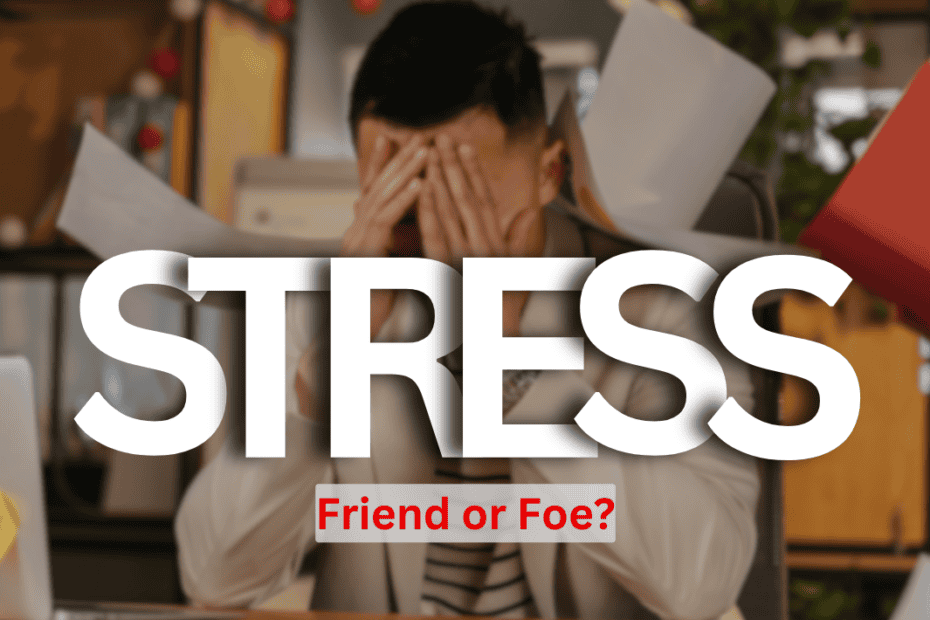Stress and resilience are related however stress is always portrayed in a negative way. What if it is a necessary part of life? What if we need it to achieve, accomplish and be fulfilled? Learning to deal with stress rather than avoiding it, is an important aspect of building resilience.
Imagine if we didn’t have any stress at all! Would our homework, assignments or projects ever be completed? It may be tempting to think that yes we can still complete them without any stress but the reality is that although a minority of people would still be able to do these tasks, most people will not complete most tasks on time.
What is stress?
Stress can be defined as any type of change that causes physical, emotional or psychological strain. Stress is your body’s response to anything that requires attention or action. Everyone experiences stress to some degree. The way you respond to stress, however, makes a big difference to your overall well-being.
https://www.who.int/news-room/questions-and-answers/item/stress
Is stress normal?
Imagine a world where you give your car for repair to a garage and workers have no stress at all? This means that they have no stress about timeframe, how many cars they need to repair, when they need to order needed parts, how they will pay the bills of the workshop etc. You will not know if your car will get repaired and when. You will not know if the quality of work will be adequate or poor, as the garage doesn’t have any stress of complaint, court case if they do poor job or complain to trade standards. It is clear from this small example that stress is necessary, indeed ideal to help us push ourselves to put in good effort in our work and to complete on deadlines. Stress is therefore normal.
So why does stress get a bad name?
Yerkes-Dodson Law of stress is helpful to understand this question. It creates an inverted U shaped curve. As our stress level increases, our performance also increases (meeting deadlines, finishing good quality work, working hard etc) but only up to a point. Beyond this point, at which peak performance is reached, our performance deteriorates and instead of being motivated, engaged and productive, we begin to worry, waste our efforts and notice impaired performance. In essence stress is useful, indeed necessary for us to achieve our best but too much stress is counter-productive and can lead to physical and emotional problems, that in the long term can lead to physical and mental health issues.
What about resilience?
Recall, one of the definitions of resilience. Resilience is the ability to develop well despite exposure to stress factors commonly causing mental problems. Resilience is therefore only exposed during times of stress. If there is not stress, how would we know our emotional strength? A useful way of looking at stress is that it can build resilience therefore we should expose ourselves to stressful situations but keeping the Yerkes-Dodson law in mind and not over extending ourselves.

Another way of looking at stress or adversities is that these can be used as helpful ways of building resilience, rather than leading to dysfunction, despair or depression. If we use the example of physical fitness, body needs the stress from exercise so that it can become stronger. This is as much true for the one training to run as it is for the one lifting weights. What if this person, avoided these exercises (stress on the body)? They will only become unfit, unable to run, overweight, breathless and weak! To build resilience in any domain (physical, mental, social) stress is needed.
Okay, I get it! Stress is needed to build resilience but how do I avoid too much stress?
Everyone has a different tolerance level to stress. The point of peak performance at the height of stress is different for different individual. Importantly, this point can be altered with practice and training. Remember the runner or the body builder we considered before? Initially the runner will have to stop after a short distance as he or she will become breathless. It is because they have reached their peak performance very quickly and after a short distance and their body cannot deal with anymore stress. What happens when the same runner tries after weeks of practice? They will be able to run much much further before having to stop. Their peak stress point has been altered through weeks of practice.
Imagine if the new runner, did not stop during the first run, despite being breathless and fatigued! They will no doubt be able to push themselves to run a bit further but will get increasingly tired and will eventually be forced to stop due to breathlessness or pain. If they didn’t they will likely get injured. The key therefore is knowing our own stress limit. We can extend ourselves slightly beyond this but taking on too much stress (for our individual capacity) will lead to problems.
Resilience is the same. It is the individual capacity to deal with adversities (stress) that leads to positive adaptation, even though it can usually be expected to lead to problems. Good news here is that resilience can be learned, increased and changes with different situations. We may struggle to deal with one situation but may be very skilled in dealing with another difficult situation.
Maths homework is not the same as English homework! Just because you struggled in one situation, doesn’t mean that you are not resilient to another.
AQ
How do we increase our resilience?
First, we need to learn and understand what we are able to deal with and what is our personal limit. Next, we need to understand what problems we are facing, what situations we have to deal with and which ones we can avoid. Then we can focus on a situation and list personal qualities, skills and resources we can use to deal with it and what help can we obtain from others. This may be from people we trust, people who have been through similar situations, or can even be books or online resource etc.
Once we have the basic understanding of all these factors, we can embark on our individual journey of resilience and repeat the process every time we struggle (too much stress). We also need to learn how to reduce our stress once we have reached our limit so that we can recover, prepare and try again.
There are therefore, many individual factors that contribute towards resilience and we must slowly work on these to increase our resilience. Knowing our own individual strengths, weaknesses and the situations we need to deal with are good starting points on this journey.

Very good.Well done.
Masha Allah v nice
Great points, very well written. Great job 👏
A very useful read! Thanks for sharing
Logical approach to attack the shadow , trigger and anima within us
Logical approach to appreciate tolerance And , patience to protect the body , restorative embodiment
Great article, thanks for sharing – it’s important not to treat stress as the total bad guy ;0
This is great! Makes so much sense, and contains important points for everyone to consider.
Pingback: Feeling Frustrated? Learn How to Use Feelings as Signposts - The Resilience HQ
Pingback: Student Mental Health & 2 Methods to Recognise it Early? - The Resilience HQ
Pingback: How to Manage Stress and Build Resilience? - The Resilience HQ
Pingback: Overcome Challenges Using Time and Mindset - The Resilience HQ
Pingback: What is Resilience? 3 Definitions You Need to Know - The Resilience HQ
Pingback: Learn Problem Solving to Overcome Challenges with 10 Simple Steps - The Resilience HQ
Pingback: How to Take Care of Your Mental Health as a Student? - The Resilience HQ
Pingback: Learn How to Get Unstuck with decision making - The Resilience HQ